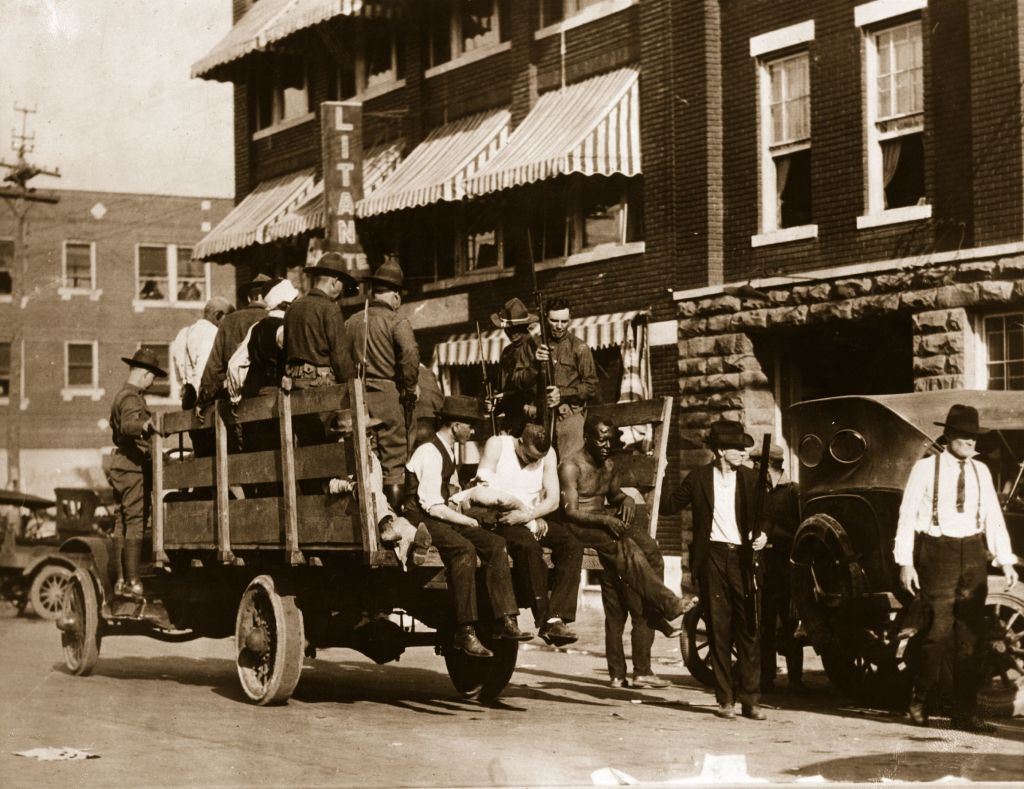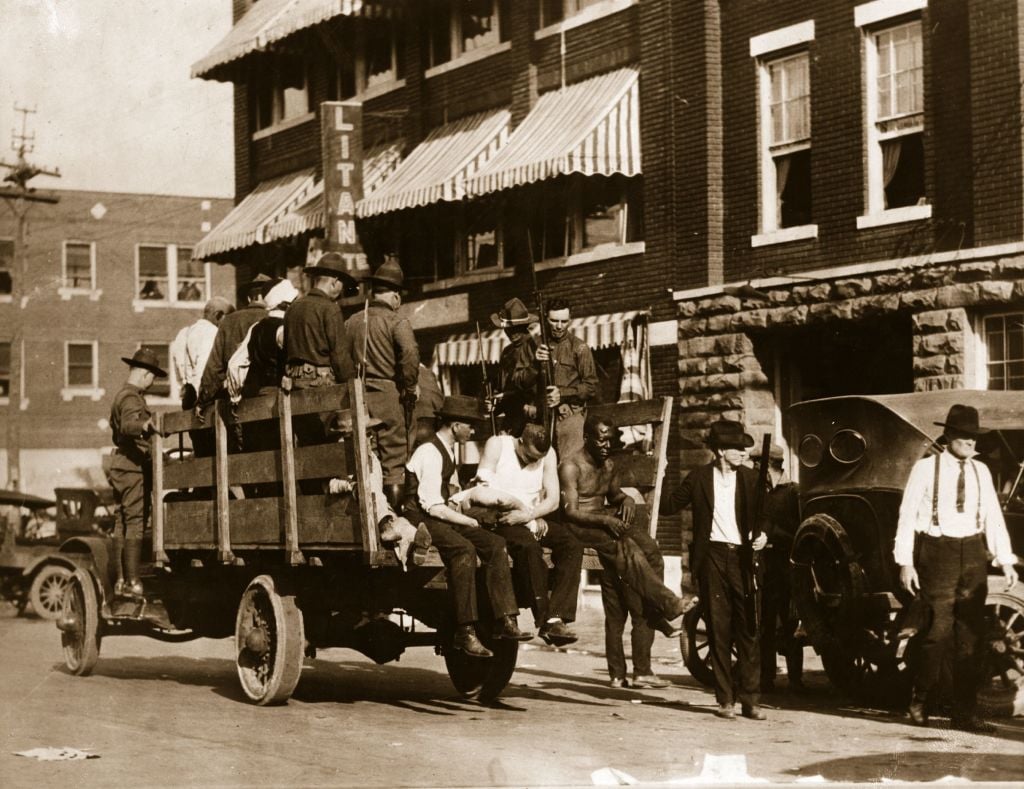Library of Congress updated Tulsa Race Massacre heading
‘Words matter, and it is important to acknowledge how far we’ve come,’ Oklahoma Rep. Forrest Bennet said
The Library of Congress has agreed to change the subject heading from the “Tulsa Race Riot” to the “Tulsa Race Massacre” in reference to the 1921 tragedy where a white mob attacked Black residents and destroyed homes and businesses.

The Norman Transcript reported that the Library of Congress subject headings are “a list of words and phrases – called headings – that are used to indicate the topics of library resources. It is used by most academic and research libraries in the United States, as well as by many public and school libraries.”
Read More: Tiffany Cross says Meghan McCain ‘should definitely lose’ her job
Karlos Hill, department chair of the University of Oklahoma’s African and African-American Studies Department, said to distinction paints a more accurate picture of what occurred in history.
“The complete destruction of the Greenwood district, the at least 300 people, mostly Black people, killed [are] all reasons why a more accurate way of framing what happened is a massacre, versus a race riot. That’s the main reason,” Hill said told the outlet.
Oklahoma State Representative Forrest Bennett praised the change on Twitter and called it “progress.”
“Words matter, and it is important to acknowledge how far we’ve come. Our state and nation went from from pretending this didn’t happen to ensuring that it is remembered accurately,” Bennett said. “White Tulsans rioted. Black Tulsans were massacred. There’s more to do, but this is progress.”
On May 31, 1921, Dick Rowland was arrested and charged for assaulting a white female elevator operator named Sarah Page. Rowland fled the scene and white residents demanded Sheriff Willard McCullough hand the teenager over, according to HISTORY.
That event was the spark that lit the flames of the massacre, which took place in Tulsa’s historically Black Greenwood District — known as “Black Wall Street” — from May 31 to June 1, 1921. The district was home to more than 300 successful Black-owned businesses, which, according to CNN caused envy and anger amongst white Tulsa residents.
More than 800 Black residents were attacked and historians believe that more than 300 people were killed.
Read More: Colorado massacre spurs calls for state action on gun deaths
On Congress.gov, Democratic Rep. Sheila Jackson Lee of Texas introduced a resolution last July to recognize the upcoming 100th anniversary of the massacre. Jackson Lee also wants to bring to light the “efforts to cover up the truth and shield the white community, especially government officials, from accountability.”
One of the last survivors of the massacre was Olivia Hooker, who died at 103 in 2018, was six-year-old at the time. According to NBC News, Hooker was a member of the Tulsa Race Massacre Commission which sought to provide reparations to the survivors.
Hooker recalled hiding under the table as the mob destroyed her family home.
“The most shocking was seeing people you’d never done anything to irritate would just, took it upon themselves to destroy your property because they didn’t want you to have those things,” Hooker said in an interview with NPR.
Now one of the last survivors is 105-year-old Lessie Benningfield Randle, who, according to CNN, is the lead figure in a lawsuit demanding reparations.
Have you subscribed to theGrio’s podcast “Dear Culture”? Download our newest episodes now!
TheGrio is now on Apple TV, Amazon Fire, and Roku. Download theGrio today!
The post Library of Congress updated Tulsa Race Massacre heading appeared first on TheGrio.

